JAJSLP7B May 2021 – April 2022 TPS25946
PRODUCTION DATA
- 1 特長
- 2 アプリケーション
- 3 概要
- 4 Revision History
- 5 Device Comparison Table
- 6 Pin Configuration and Functions
- 7 Specifications
-
8 Detailed Description
- 8.1 Overview
- 8.2 Functional Block Diagram
- 8.3
Feature Description
- 8.3.1 Undervoltage Lockout (UVLO and UVP)
- 8.3.2 Overvoltage Lockout (OVLO)
- 8.3.3 Inrush Current, Overcurrent, and Short-Circuit Protection
- 8.3.4 Analog Load Current Monitor
- 8.3.5 Reverse Current Protection
- 8.3.6 Overtemperature Protection (OTP)
- 8.3.7 Fault Response and Indication (FLT)
- 8.3.8 Power Good Indication (PG)
- 8.3.9 Input Supply Good Indication (SPLYGD)
- 8.4 Device Functional Modes
-
9 Application and Implementation
- 9.1 Application Information
- 9.2
Typical Application
- 9.2.1 Design Requirements
- 9.2.2
Detailed Design Procedure
- 9.2.2.1 Device Selection
- 9.2.2.2 Setting Overvoltage Threshold
- 9.2.2.3 Setting Output Voltage Rise Time (tR)
- 9.2.2.4 Setting Power Good Assertion Threshold
- 9.2.2.5 Setting Overcurrent Threshold (ILIM)
- 9.2.2.6 Setting Overcurrent Blanking Interval (tITIMER)
- 9.2.2.7 Selecting External Bias Resistor (R5)
- 9.2.2.8 Selecting External Diode (D1)
- 9.2.3 Application Curve
- 10Power Supply Recommendations
- 11Layout
- 12Device and Documentation Support
- 13Mechanical, Packaging, and Orderable Information
7.8 Typical Characteristics
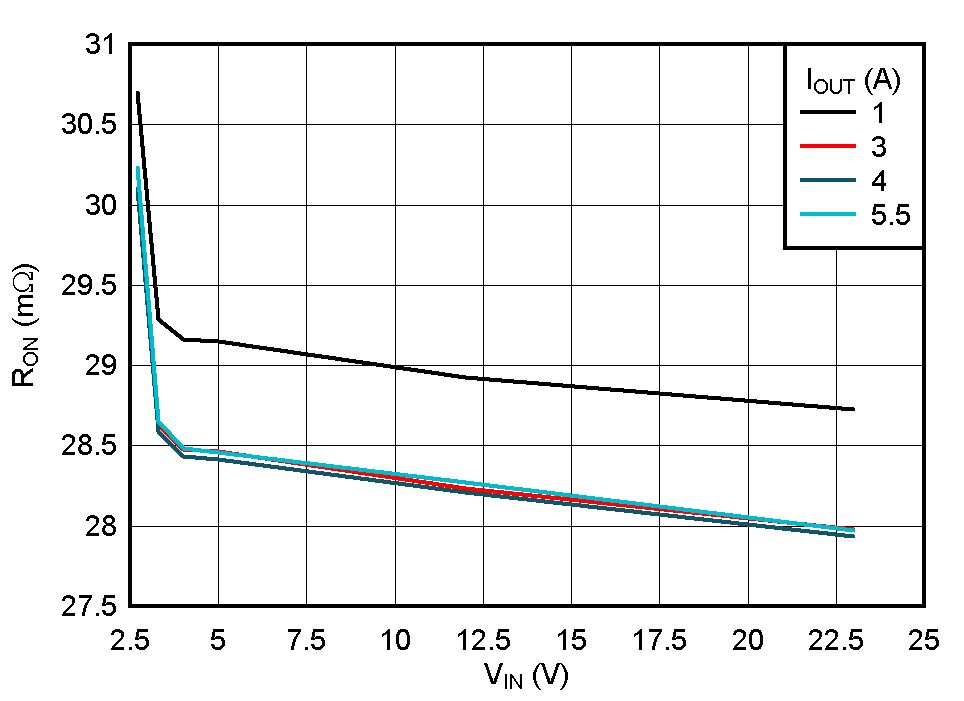 Figure 7-2 ON-Resistance vs Supply
Voltage
Figure 7-2 ON-Resistance vs Supply
Voltage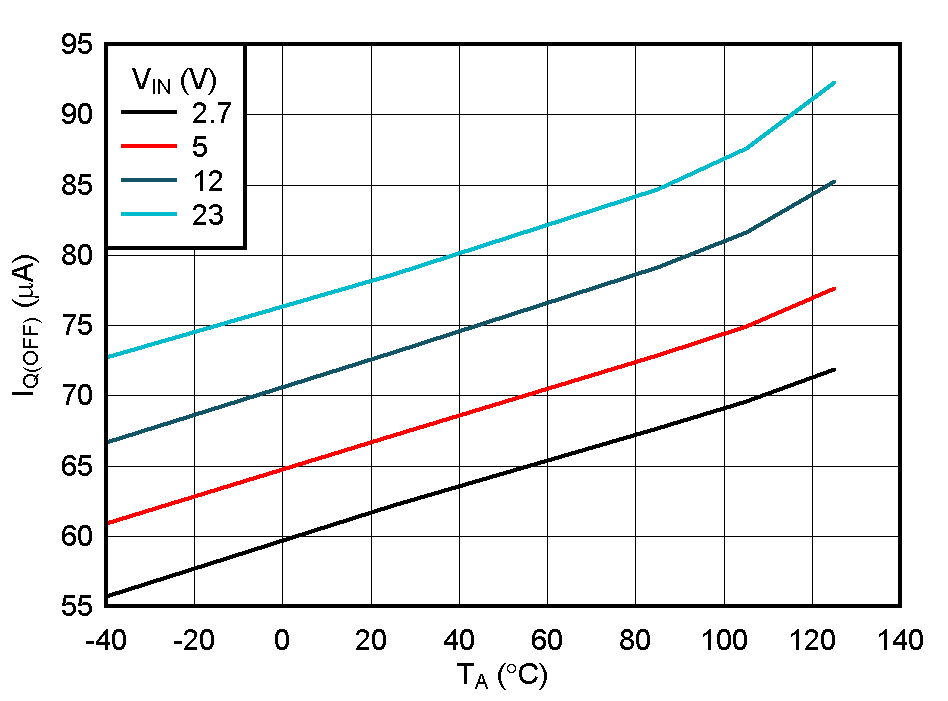 Figure 7-4 IN OFF State (UVLO)
Current vs Temperature
Figure 7-4 IN OFF State (UVLO)
Current vs Temperature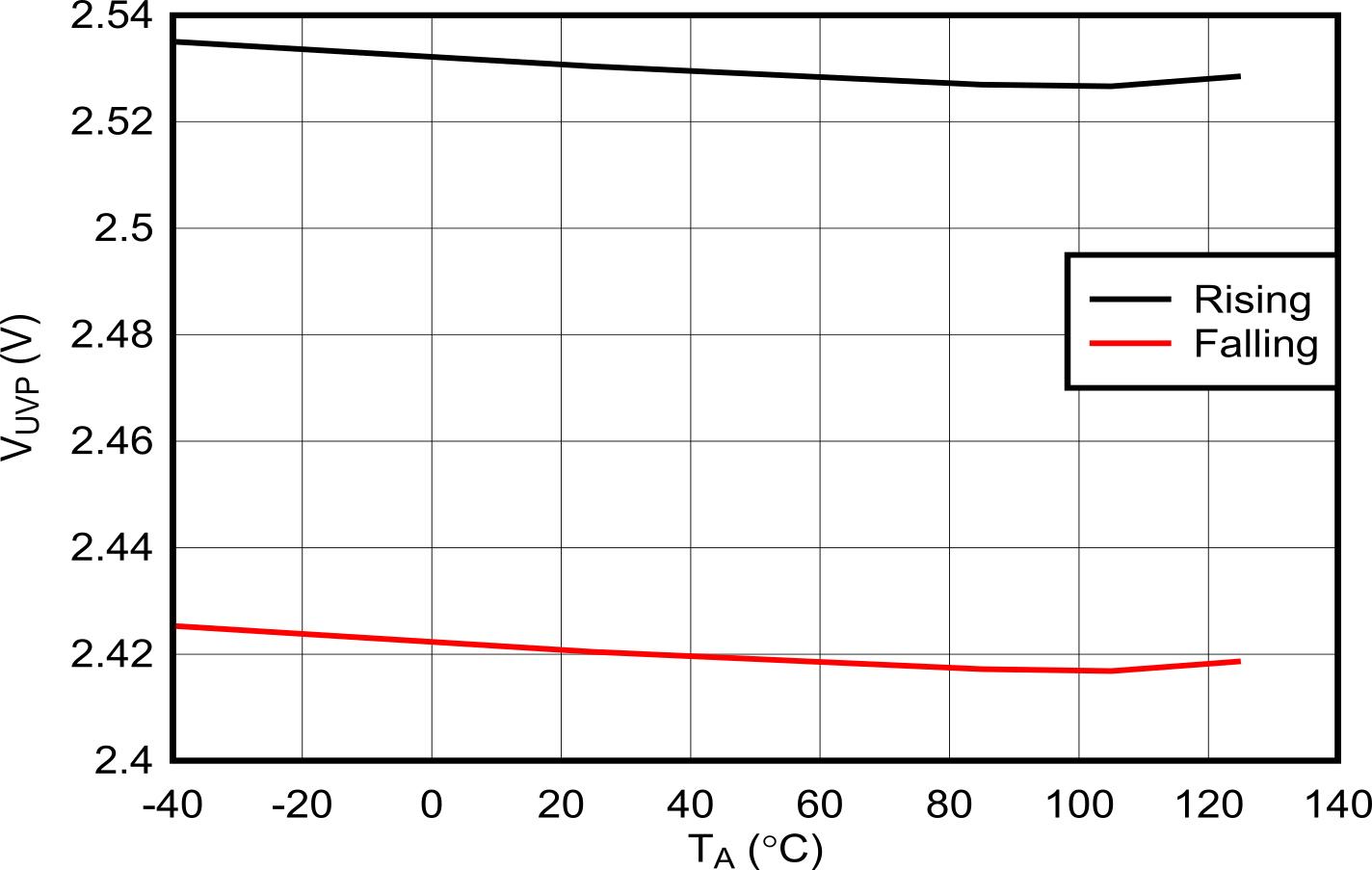 Figure 7-6 IN Undervoltage Threshold
vs Temperature
Figure 7-6 IN Undervoltage Threshold
vs Temperature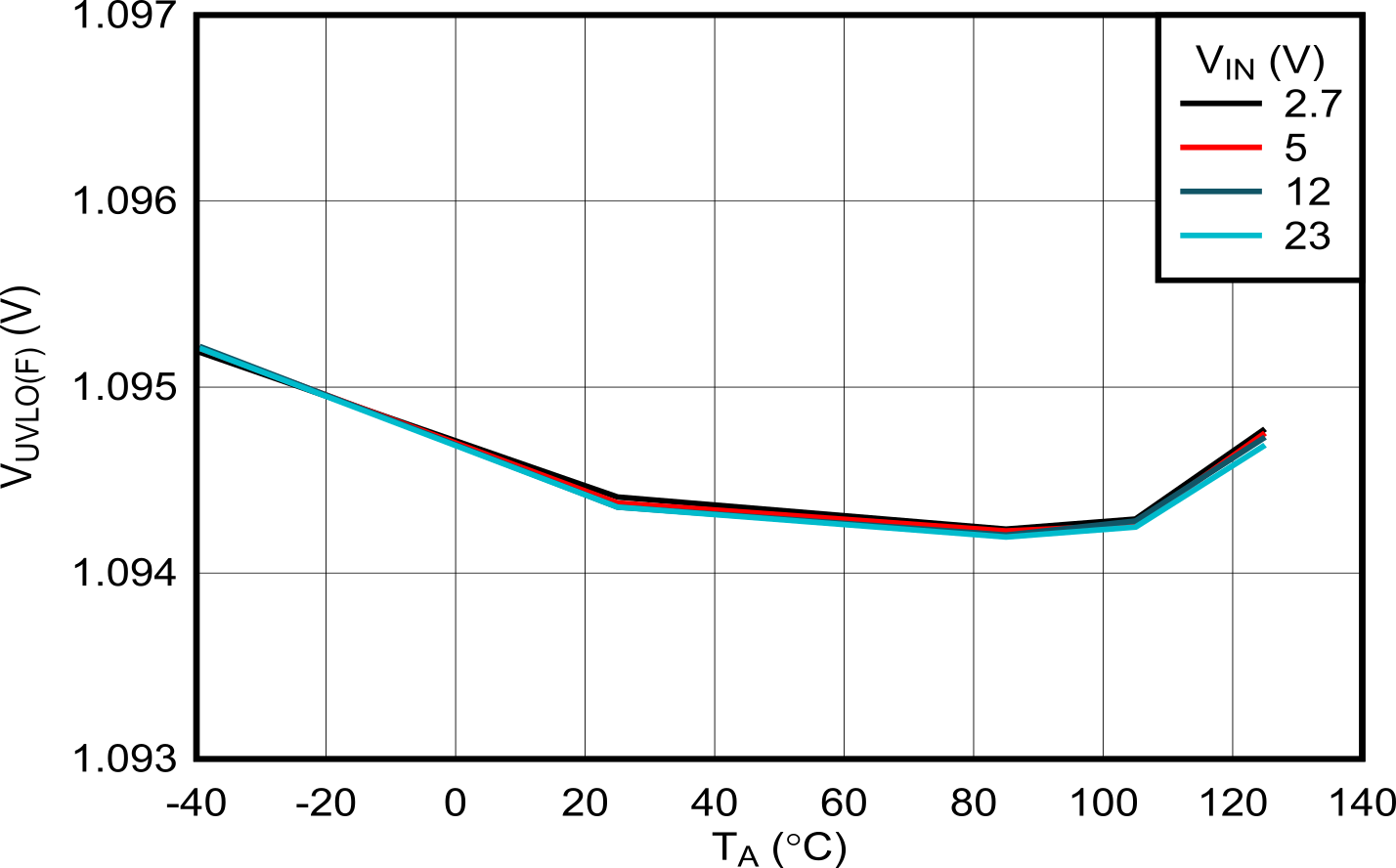 Figure 7-8 EN/UVLO Falling Threshold
vs Temperature
Figure 7-8 EN/UVLO Falling Threshold
vs Temperature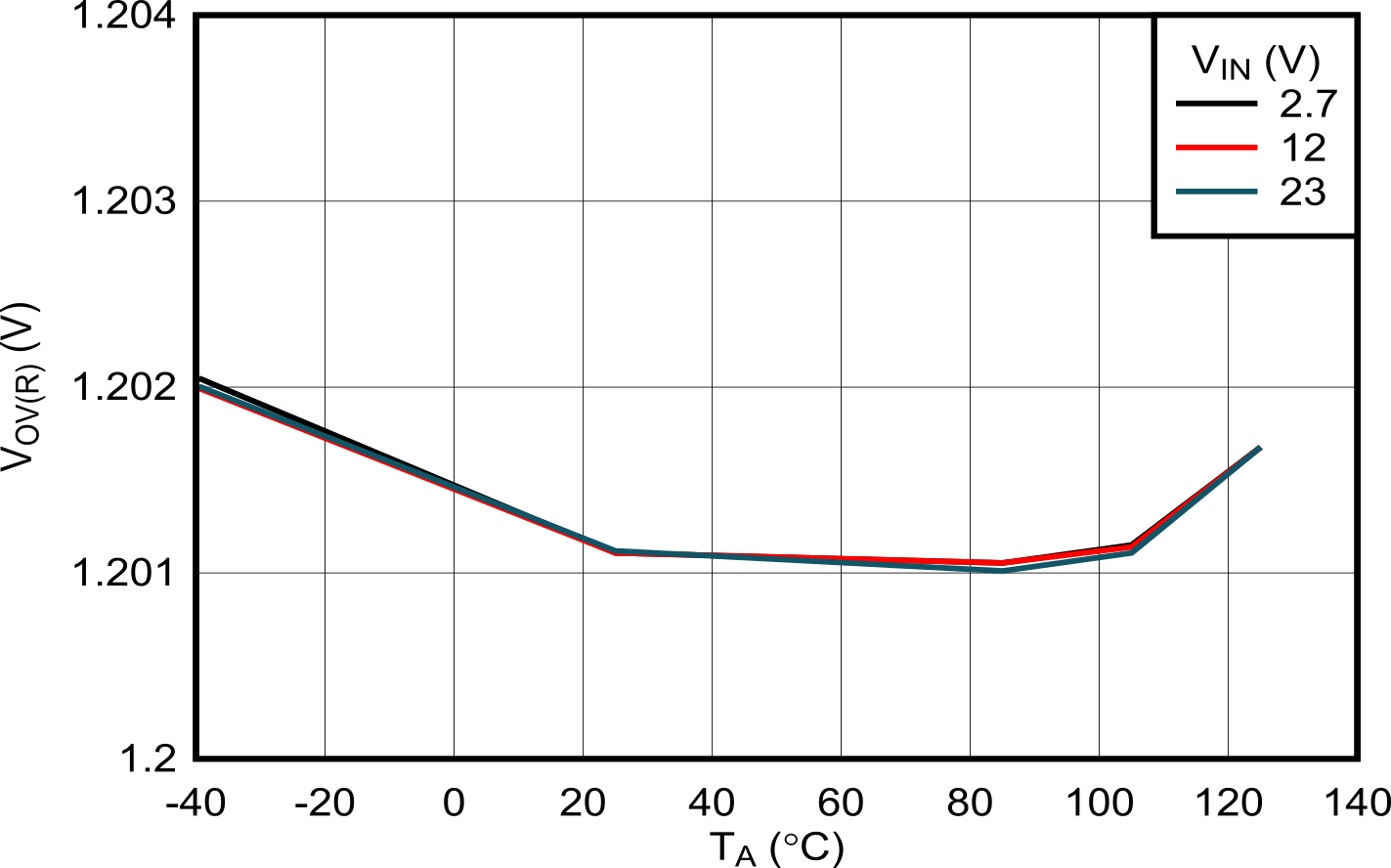 Figure 7-10 OVLO Rising Threshold vs
Temperature
Figure 7-10 OVLO Rising Threshold vs
Temperature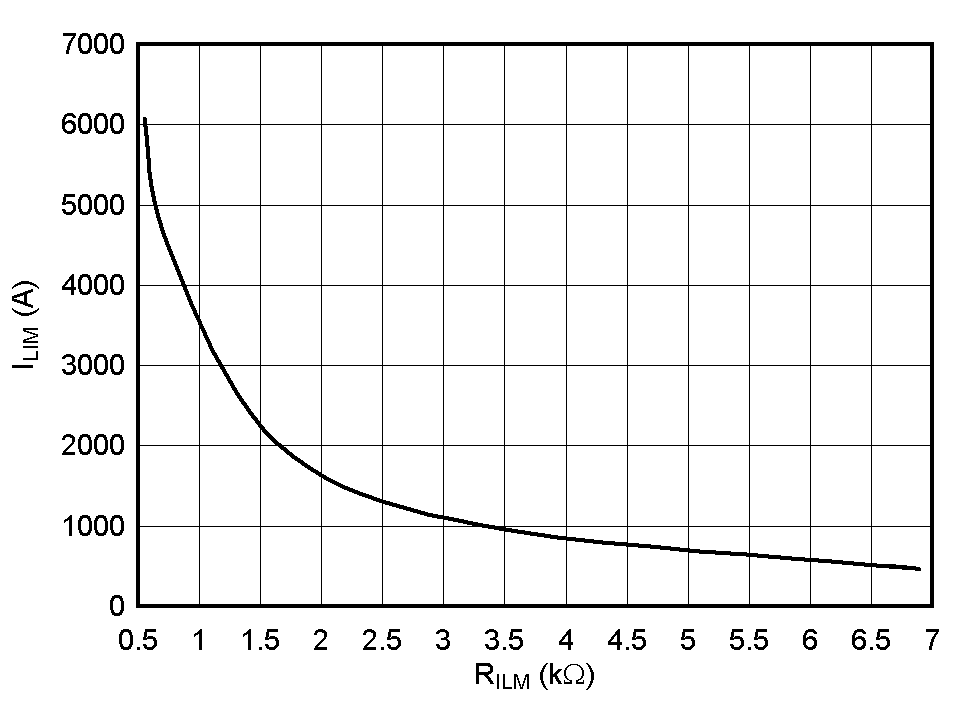 Figure 7-12 Overcurrent Threshold vs
ILM Resistor
Figure 7-12 Overcurrent Threshold vs
ILM ResistorFigure 7-14 Analog Current Monitor
Gain Accuracy
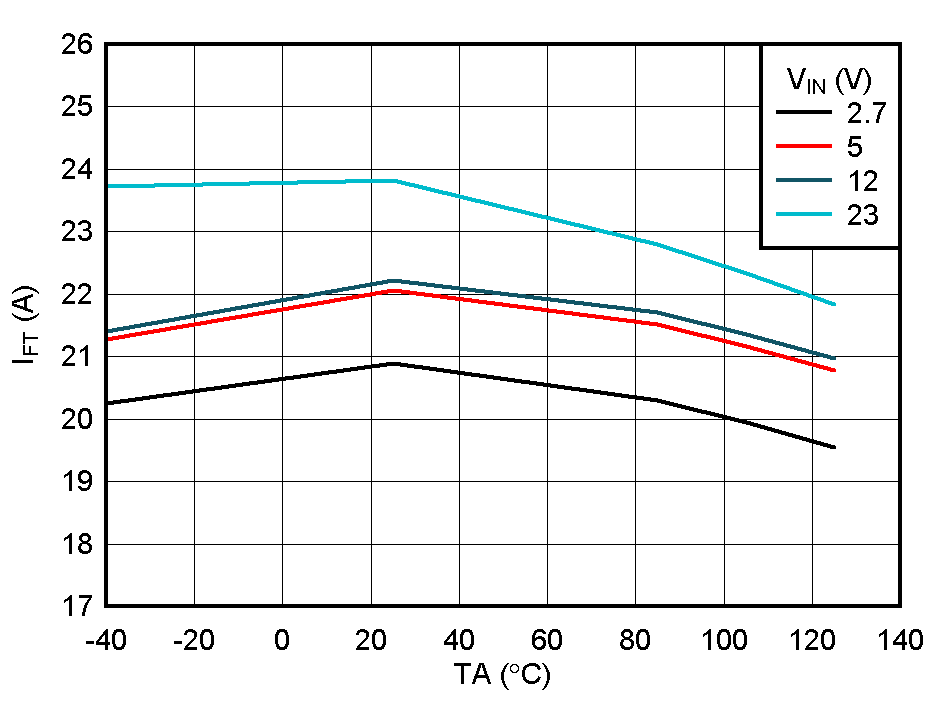 Figure 7-16 Steady State Fixed
Fast-Trip Current Threshold vs Temperature
Figure 7-16 Steady State Fixed
Fast-Trip Current Threshold vs Temperature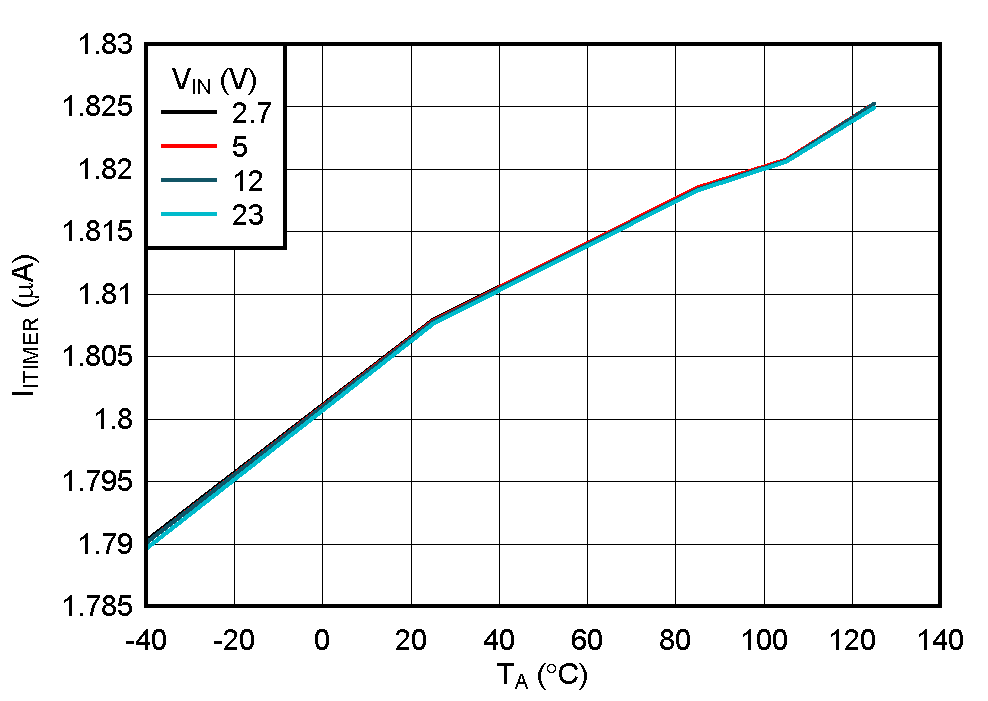 Figure 7-18 ITIMER Discharge Current
vs Temperature
Figure 7-18 ITIMER Discharge Current
vs Temperature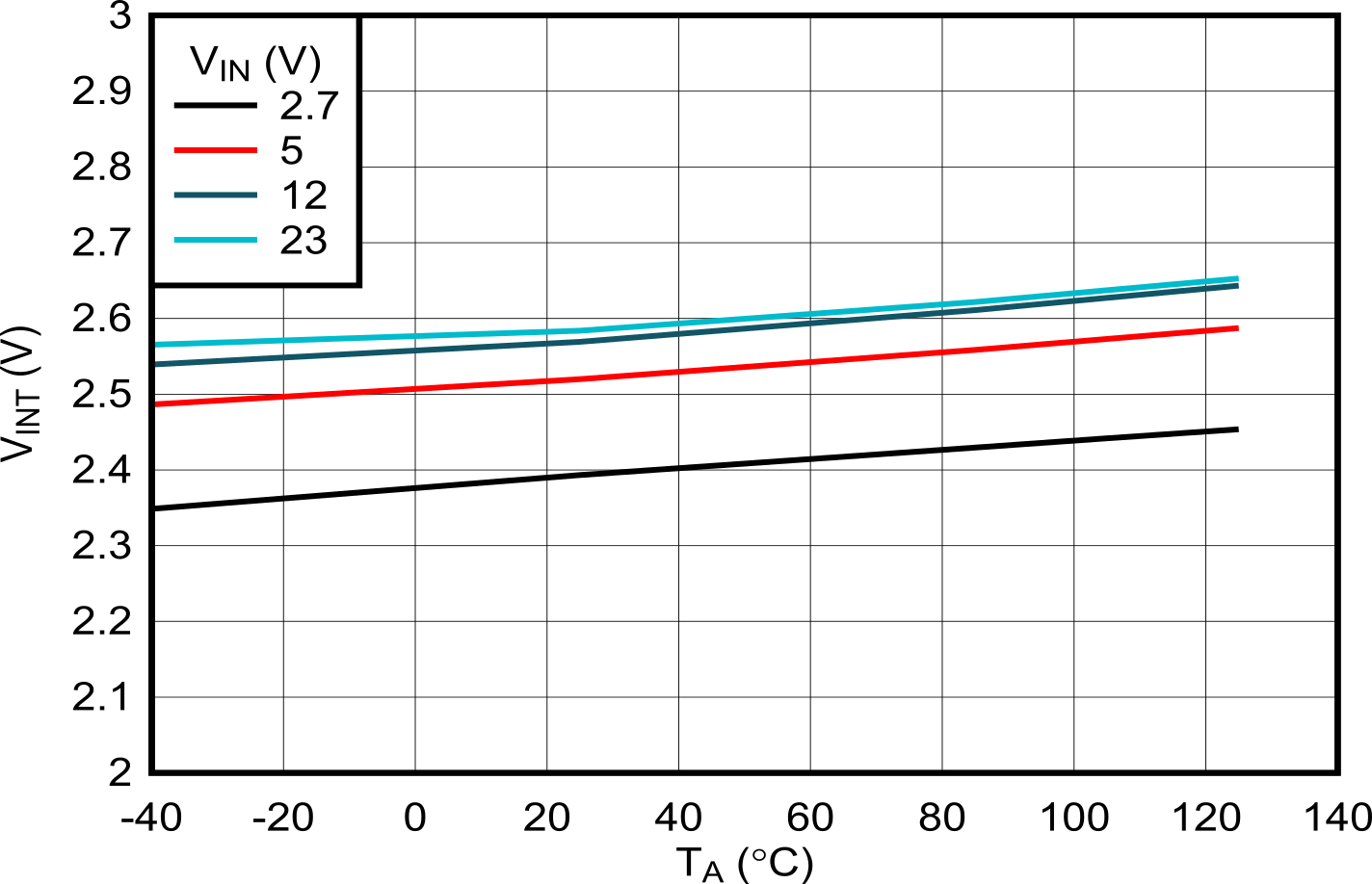 Figure 7-20 ITIMER Internal Pullup
Voltage vs Temperature
Figure 7-20 ITIMER Internal Pullup
Voltage vs Temperature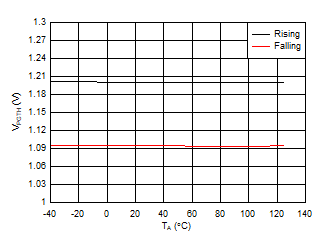 Figure 7-22 PGTH Threshold vs
Temperature
Figure 7-22 PGTH Threshold vs
TemperatureFigure 7-24 Time to Thermal Shut-Down
During Inrush State
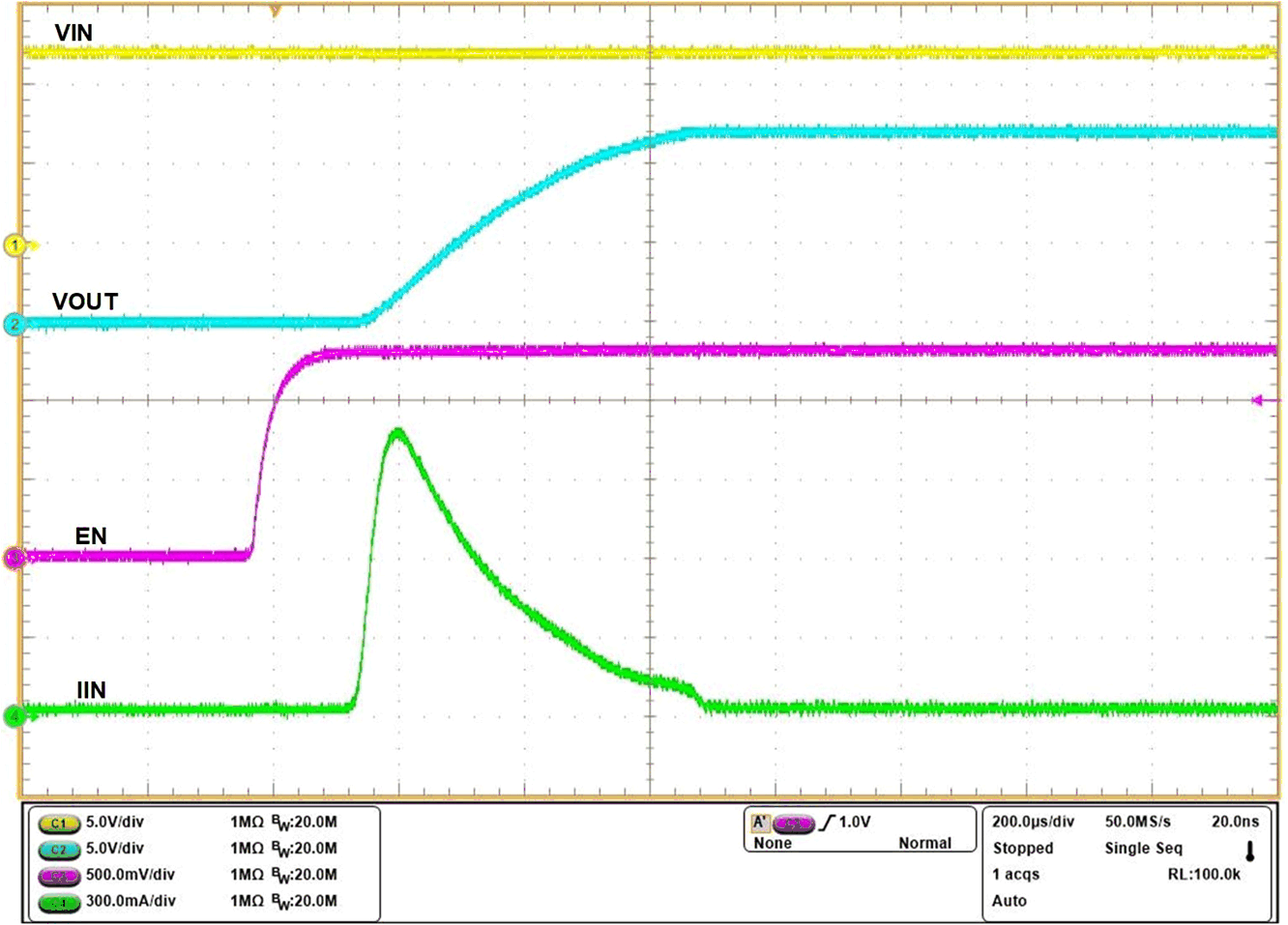
| VIN = 12 V, COUT = 30 μF, CdVdt = Open, VEN/UVLO stepped up to 1.4 V |
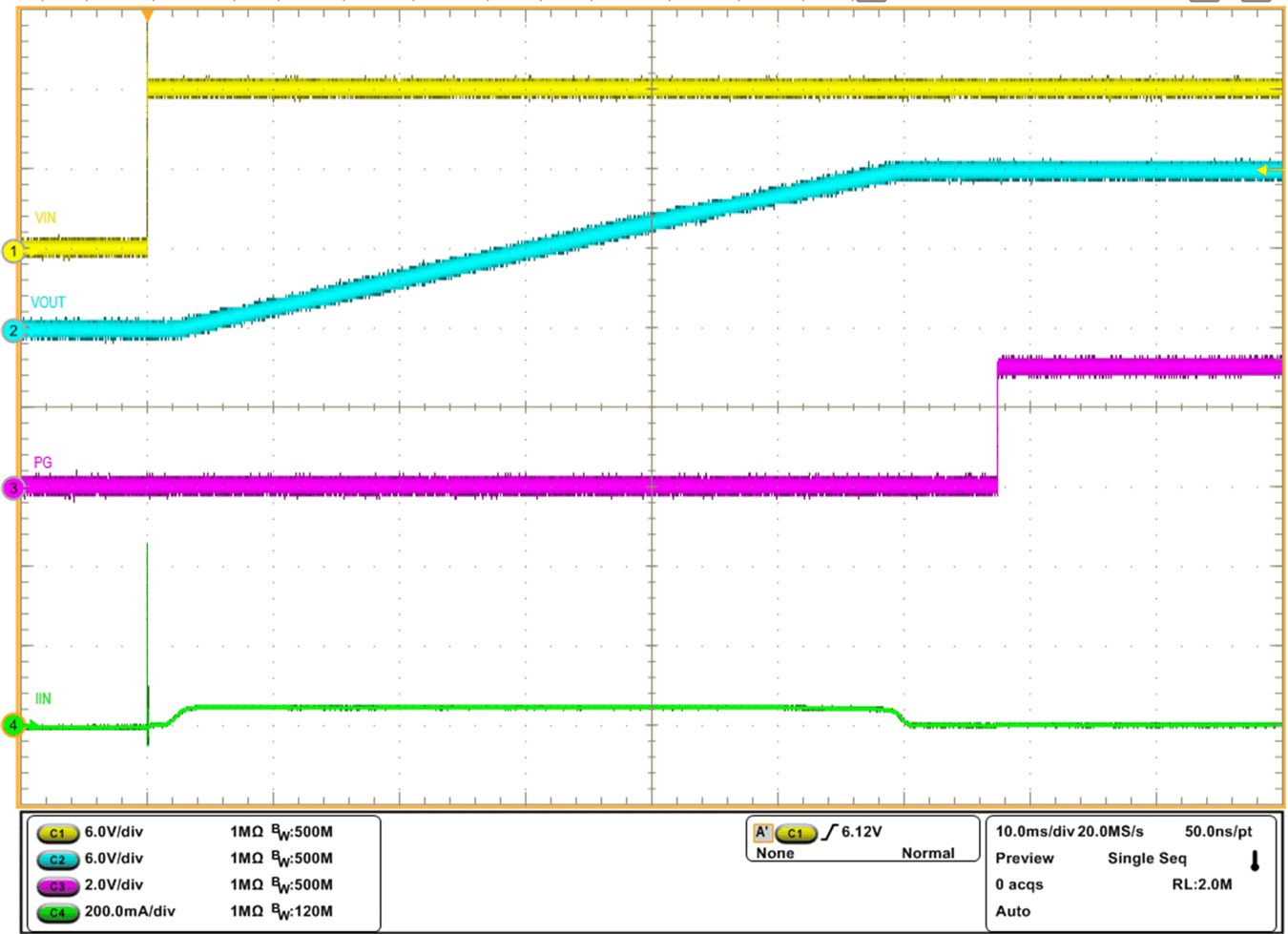
| COUT = 220 μF, CdVdt = 10 nF, EN/UVLO connected to IN through resistor ladder, 12 V hot-plugged to IN |
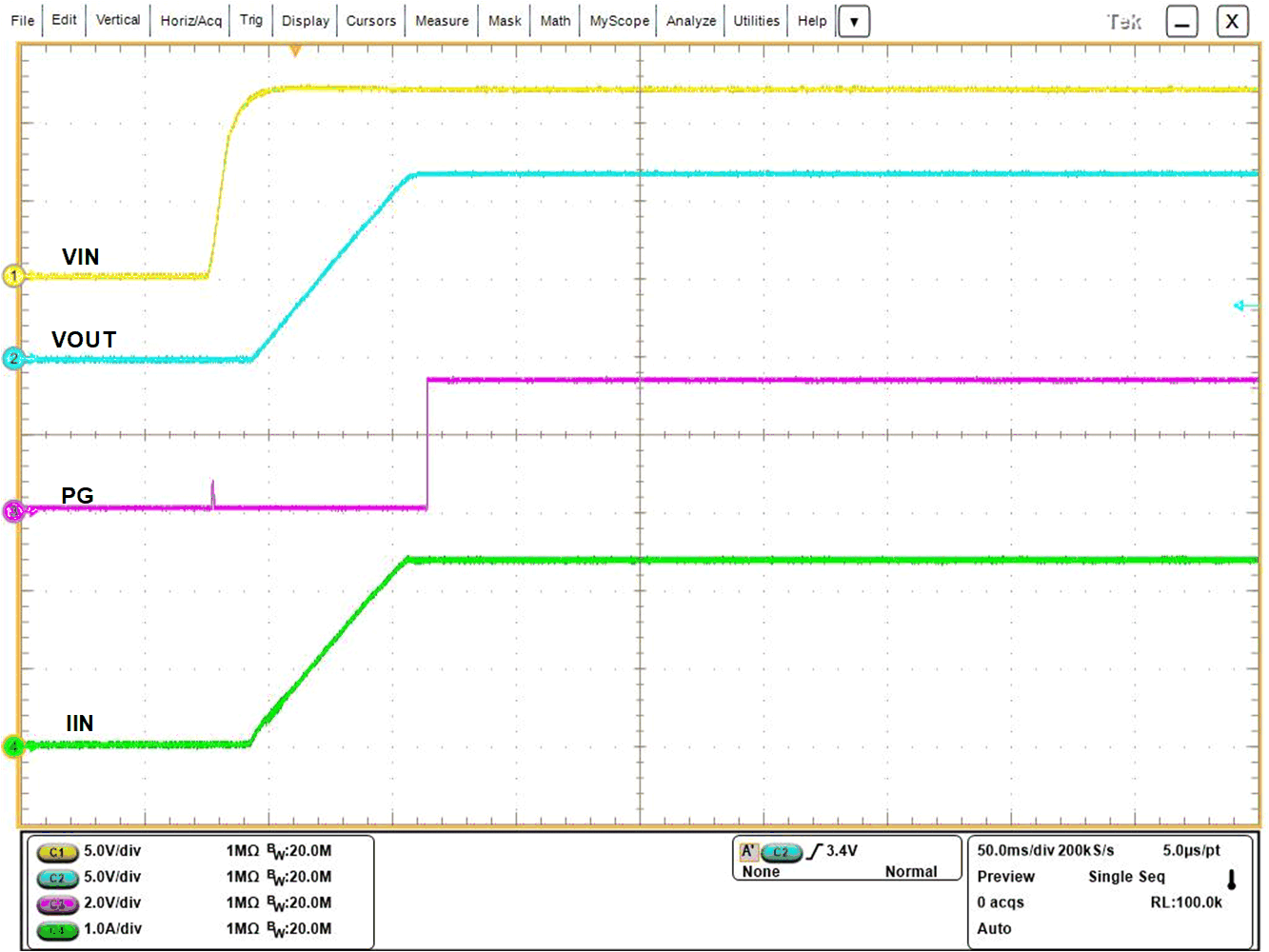
| VIN = 12 V, COUT = 470 μF, ROUT = 5 Ω, CdVdt = 3300 pF, VEN/UVLO stepped up to 1.4 V |
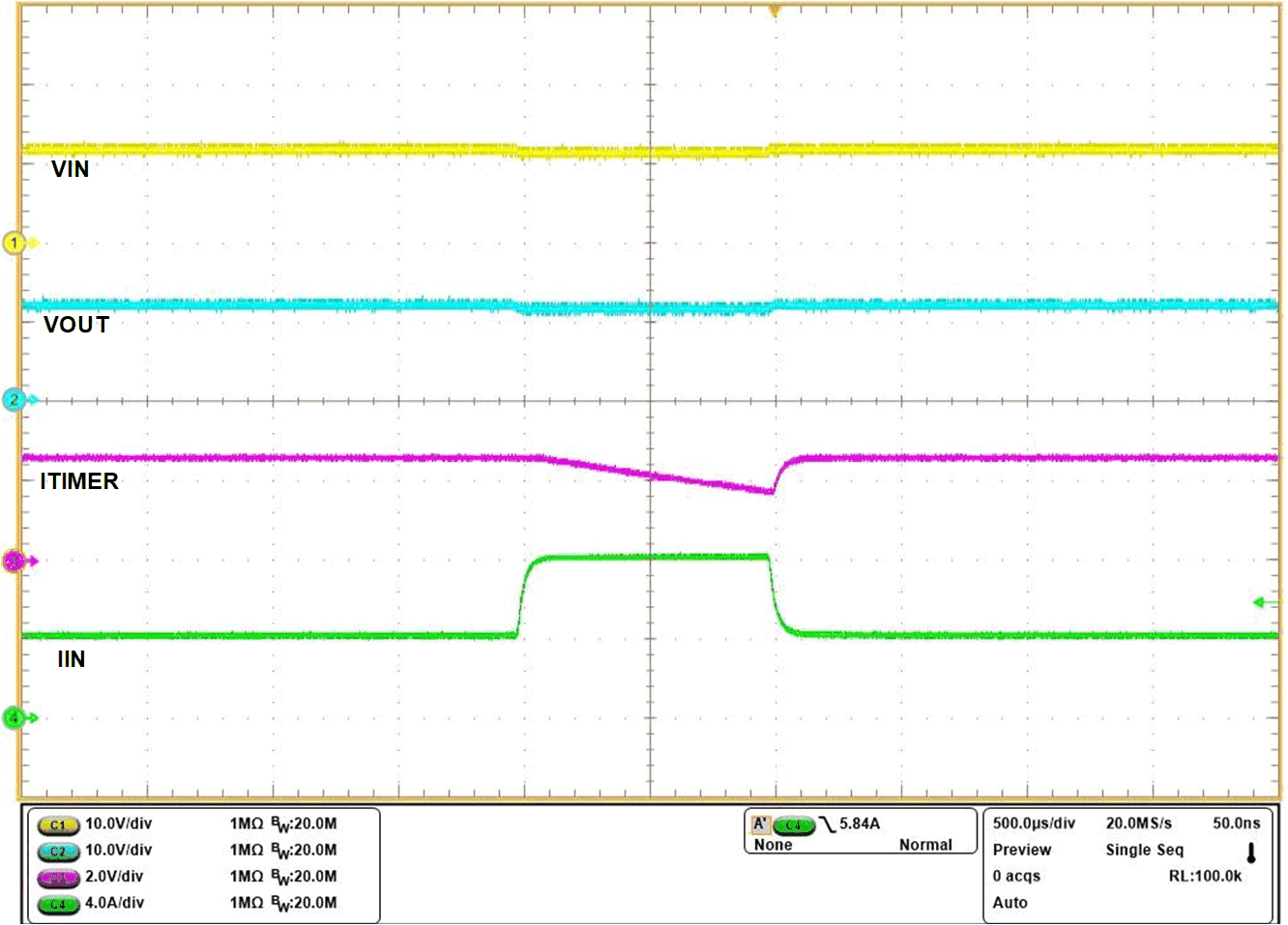
| VIN = 12 V, CITIMER = 2.2 nF, COUT = 470 μF, RILM = 549 Ω, IOUT ramped from 4 A → 8 A→ 4 A within 1 ms |
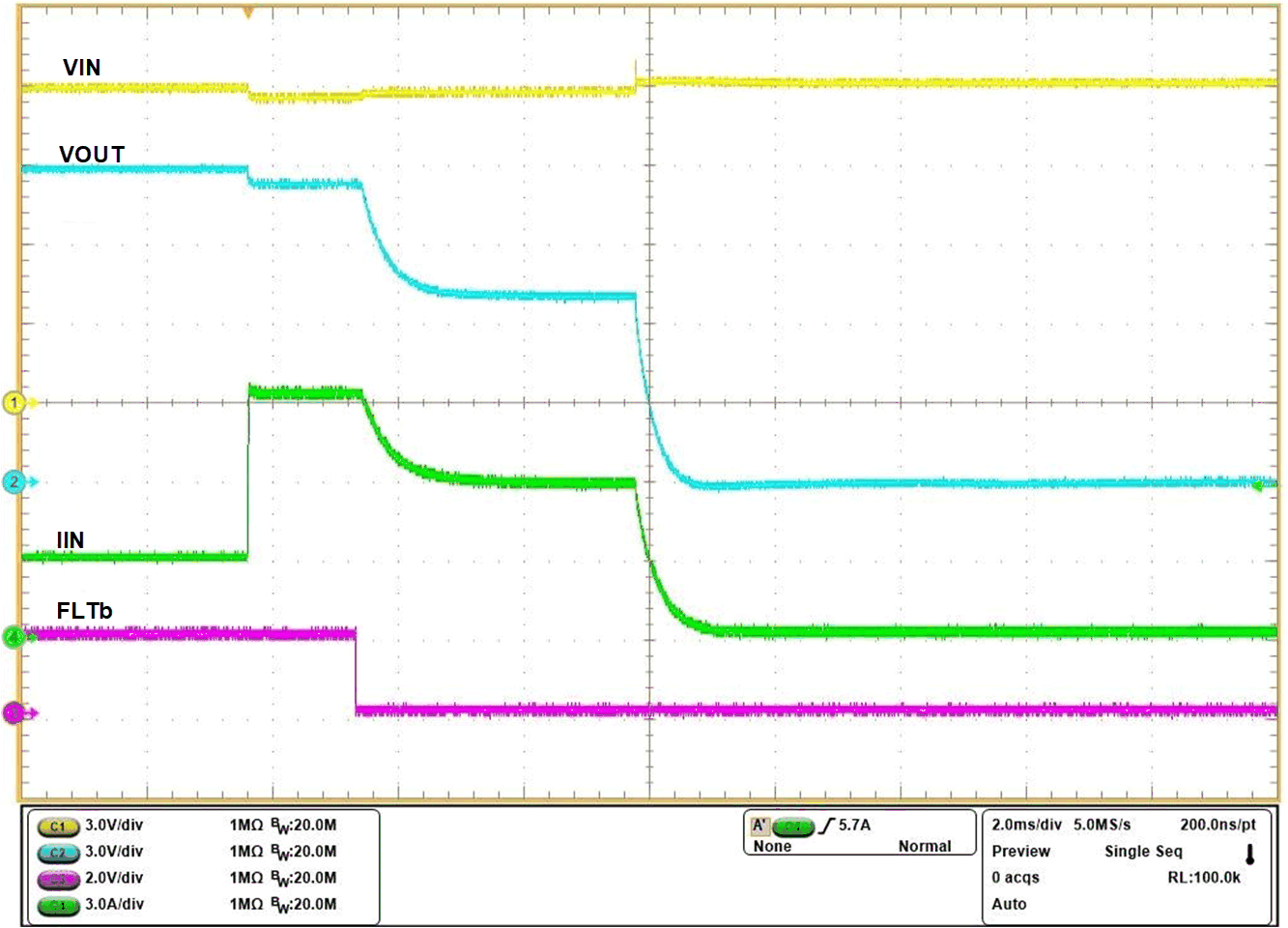
| VIN = 12 V, CITIMER = 2.2 nF, COUT = 220 μF, RILM = 549 Ω, IOUT stepped from 3 A → 9 A |
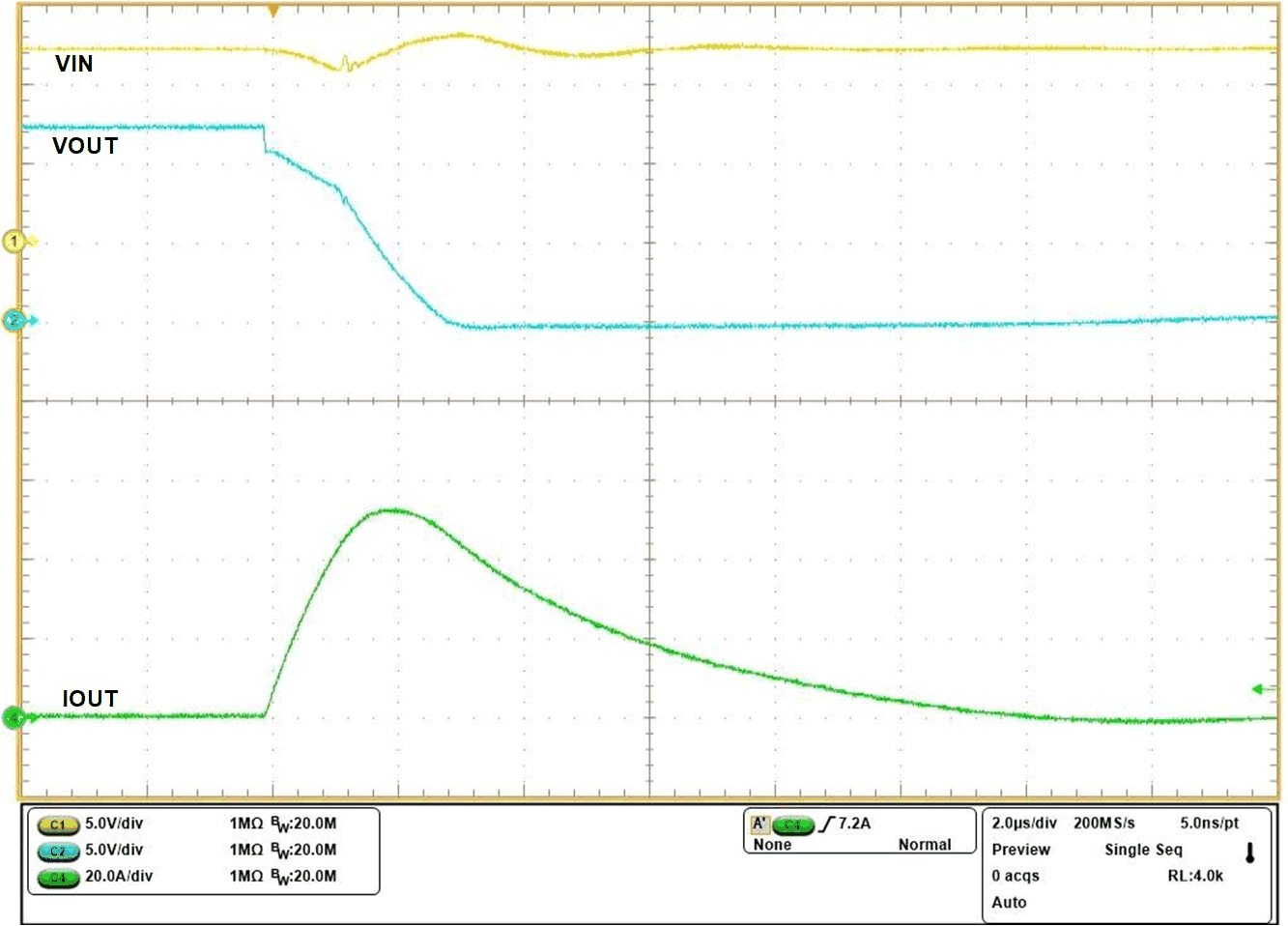
| VIN = 12 V, RILM = 549 Ω, VEN/UVLO = 3.3 V, OUT stepped from Open → Short-circuit to GND |
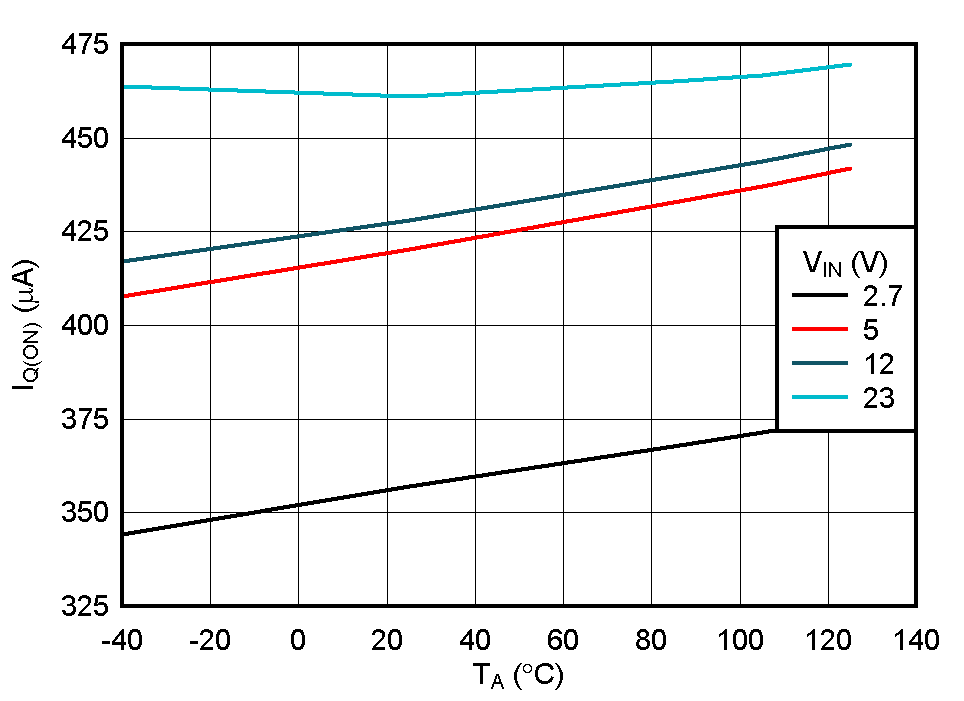 Figure 7-3 IN Quiescent Current vs
Temperature
Figure 7-3 IN Quiescent Current vs
Temperature 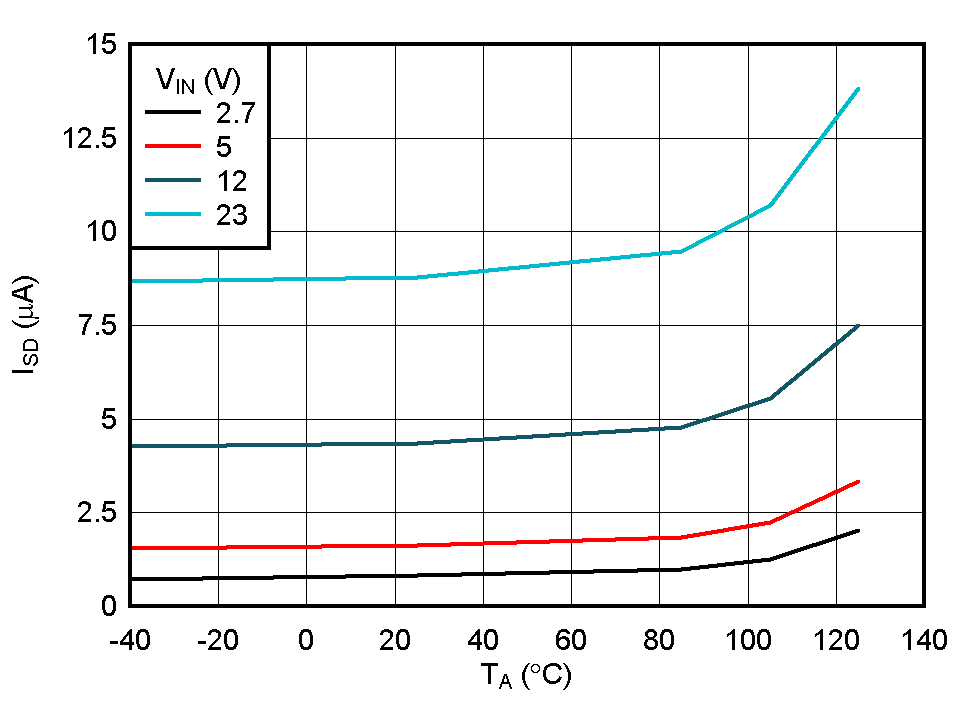 Figure 7-5 IN Shutdown Current vs
Temperature
Figure 7-5 IN Shutdown Current vs
Temperature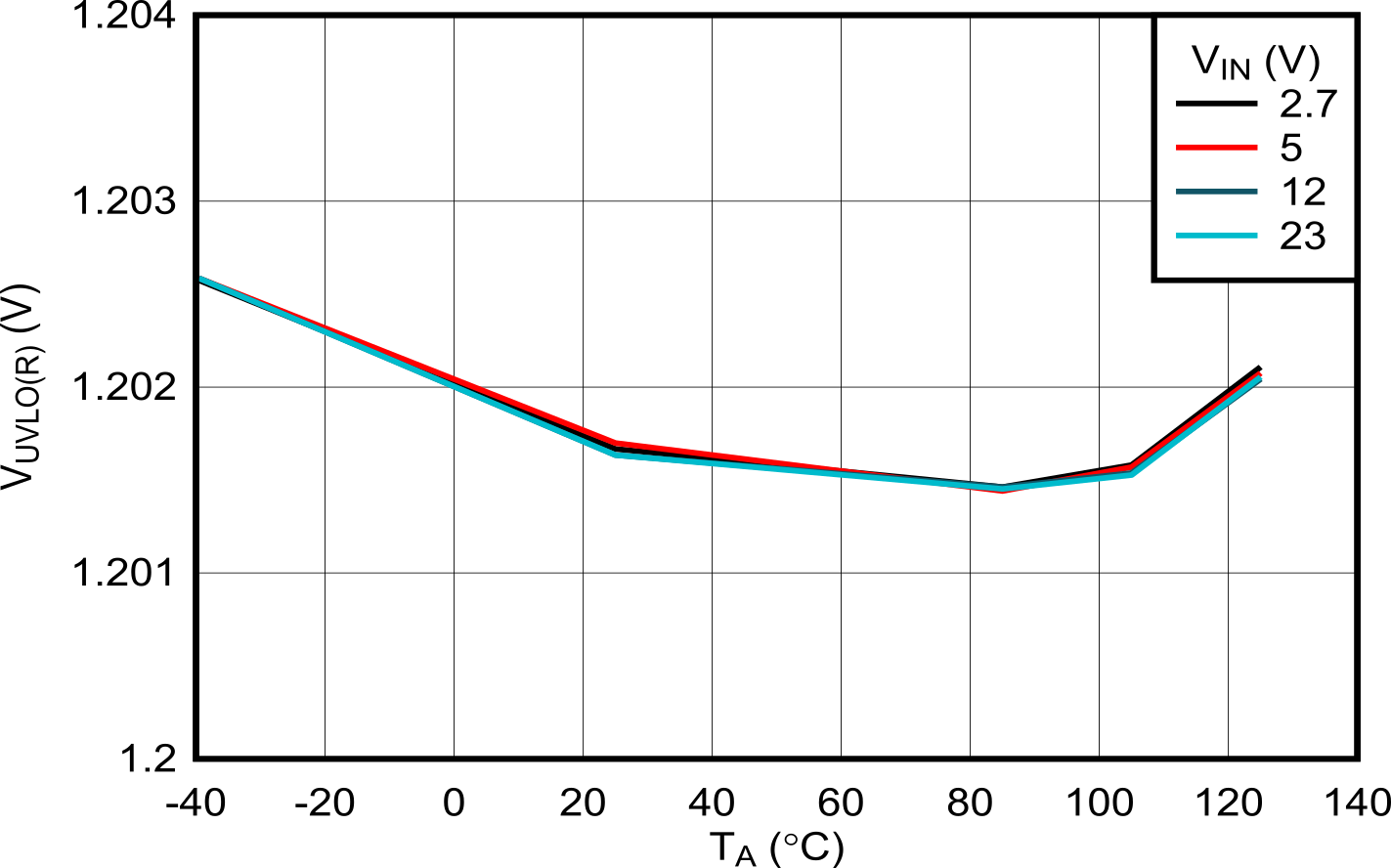 Figure 7-7 EN/UVLO Rising Threshold
vs Temperature
Figure 7-7 EN/UVLO Rising Threshold
vs Temperature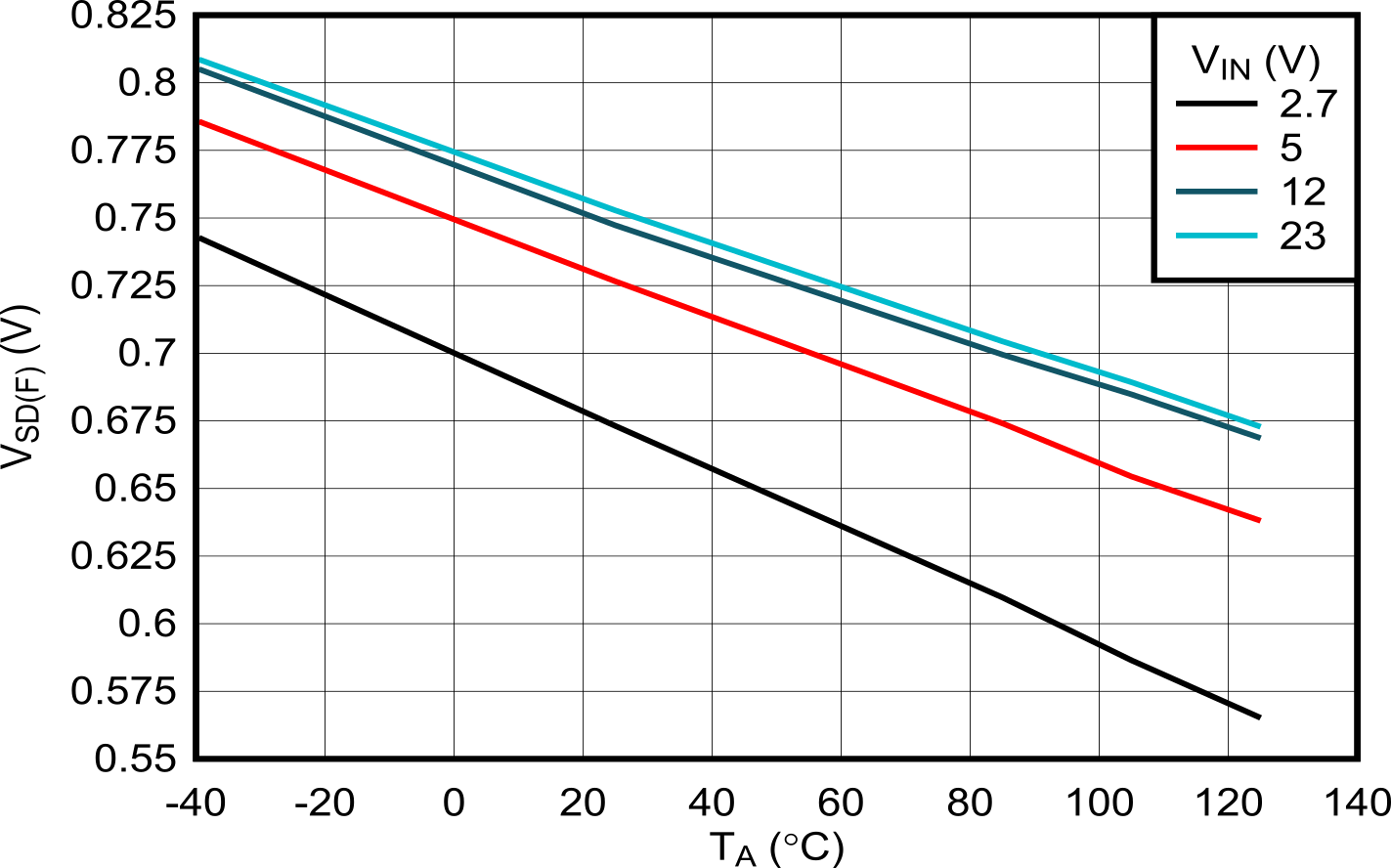 Figure 7-9 EN/UVLO Shutdown Falling
Threshold vs Temperature
Figure 7-9 EN/UVLO Shutdown Falling
Threshold vs Temperature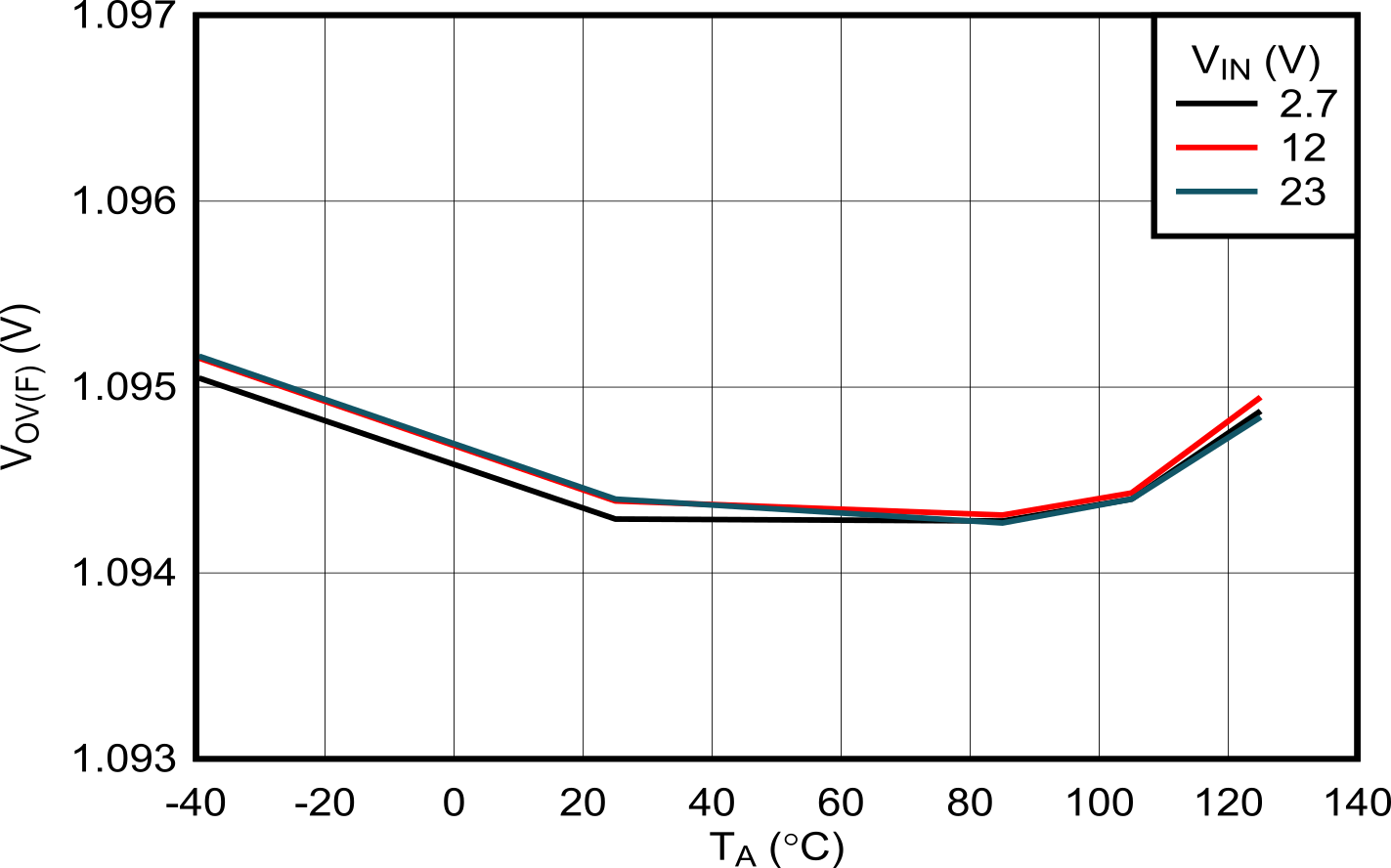 Figure 7-11 OVLO Falling Threshold vs
Temperature
Figure 7-11 OVLO Falling Threshold vs
TemperatureFigure 7-13 Overcurrent Threshold
Accuracy (Across Process, Voltage, and Temperature)
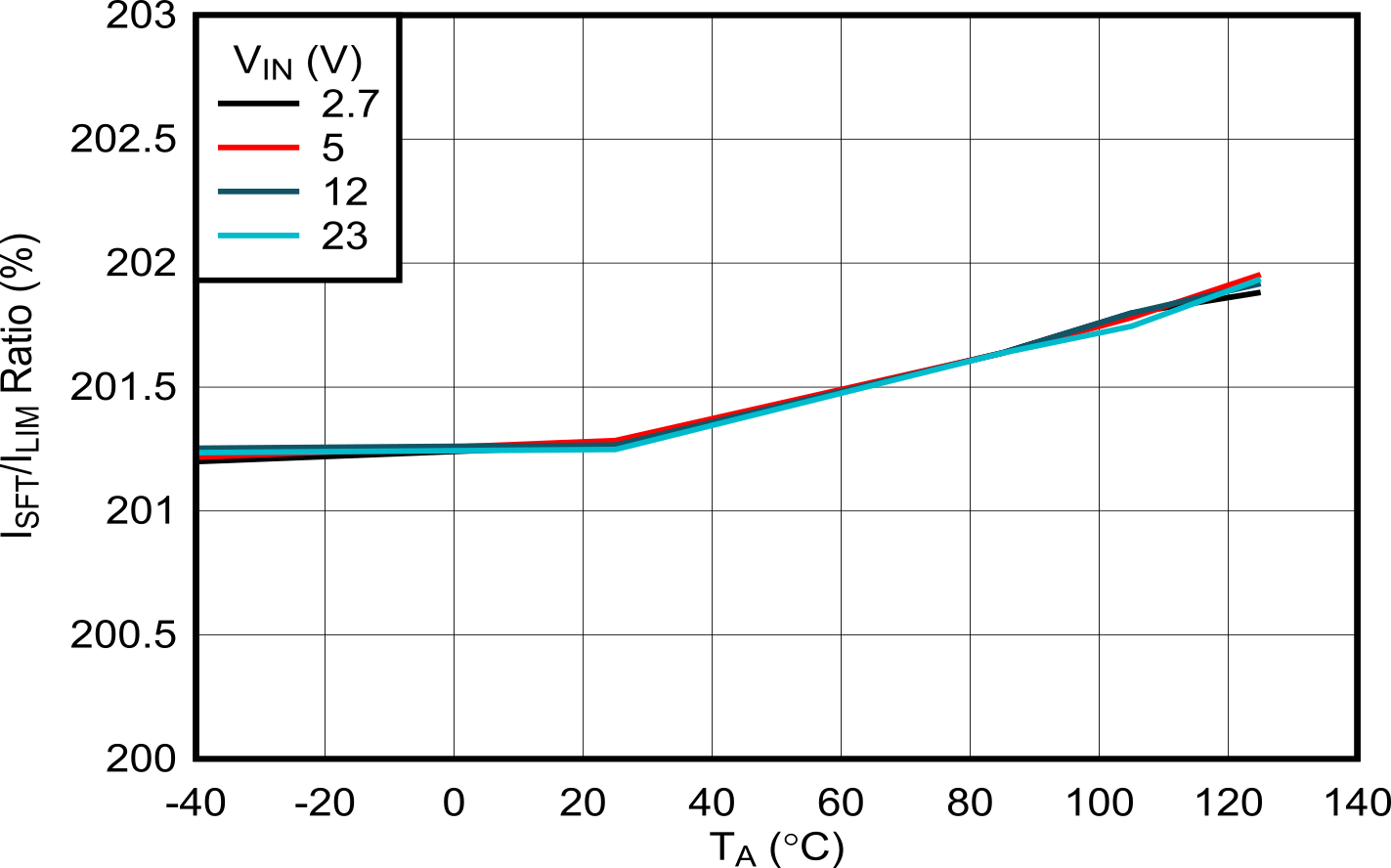 Figure 7-15 Scalable Fast-Trip
Threshold: Current Limit Threshold (ILIM) Ratio vs
Temperature
Figure 7-15 Scalable Fast-Trip
Threshold: Current Limit Threshold (ILIM) Ratio vs
Temperature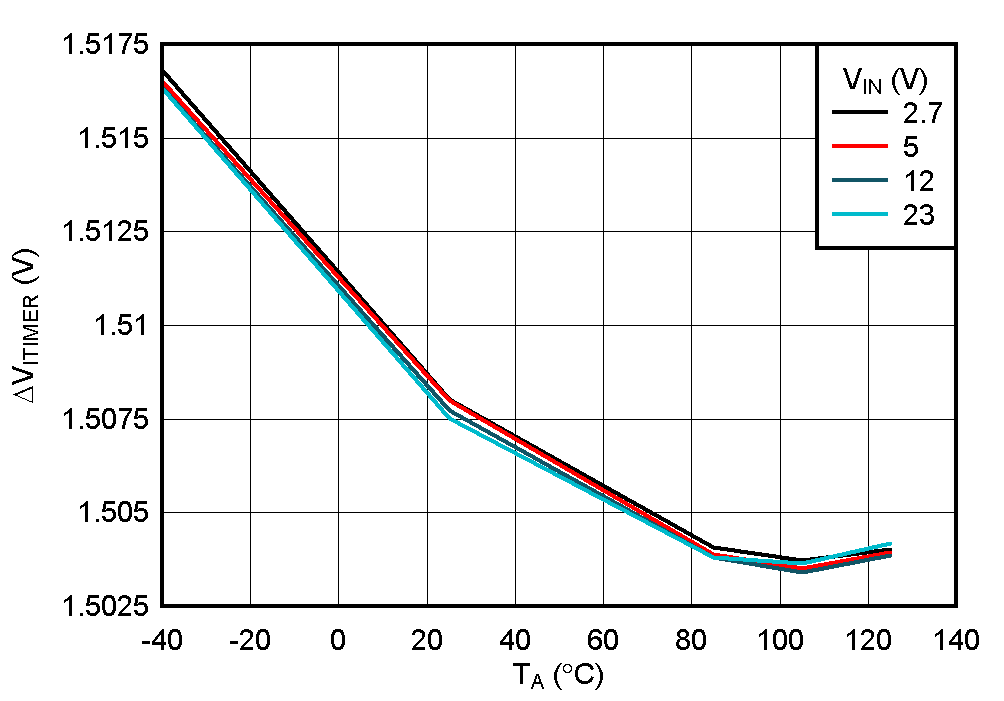 Figure 7-17 ITIMER Discharge
Differential Voltage Threshold vs Temperature
Figure 7-17 ITIMER Discharge
Differential Voltage Threshold vs Temperature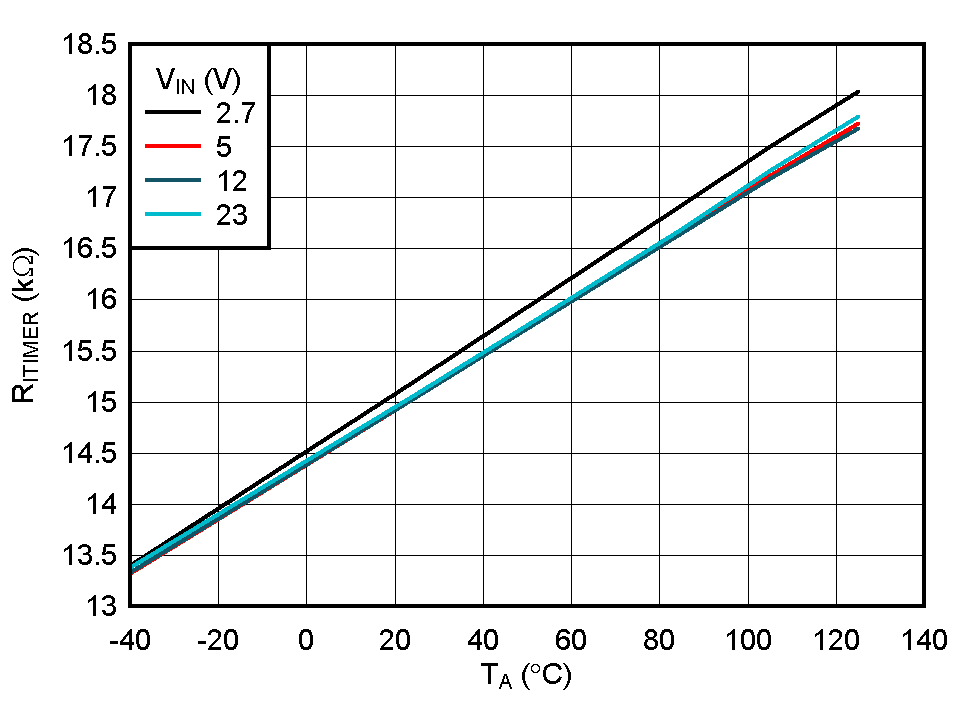 Figure 7-19 ITIMER Internal Pullup
Resistance vs Temperature
Figure 7-19 ITIMER Internal Pullup
Resistance vs Temperature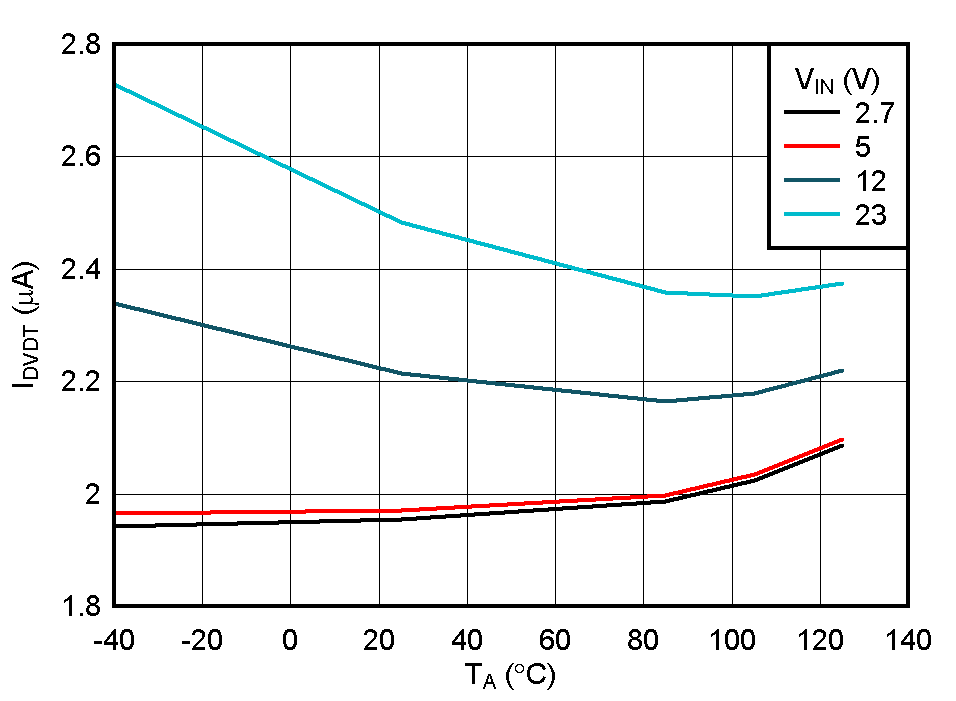 Figure 7-21 DVDT Charging Current vs
Temperature
Figure 7-21 DVDT Charging Current vs
Temperature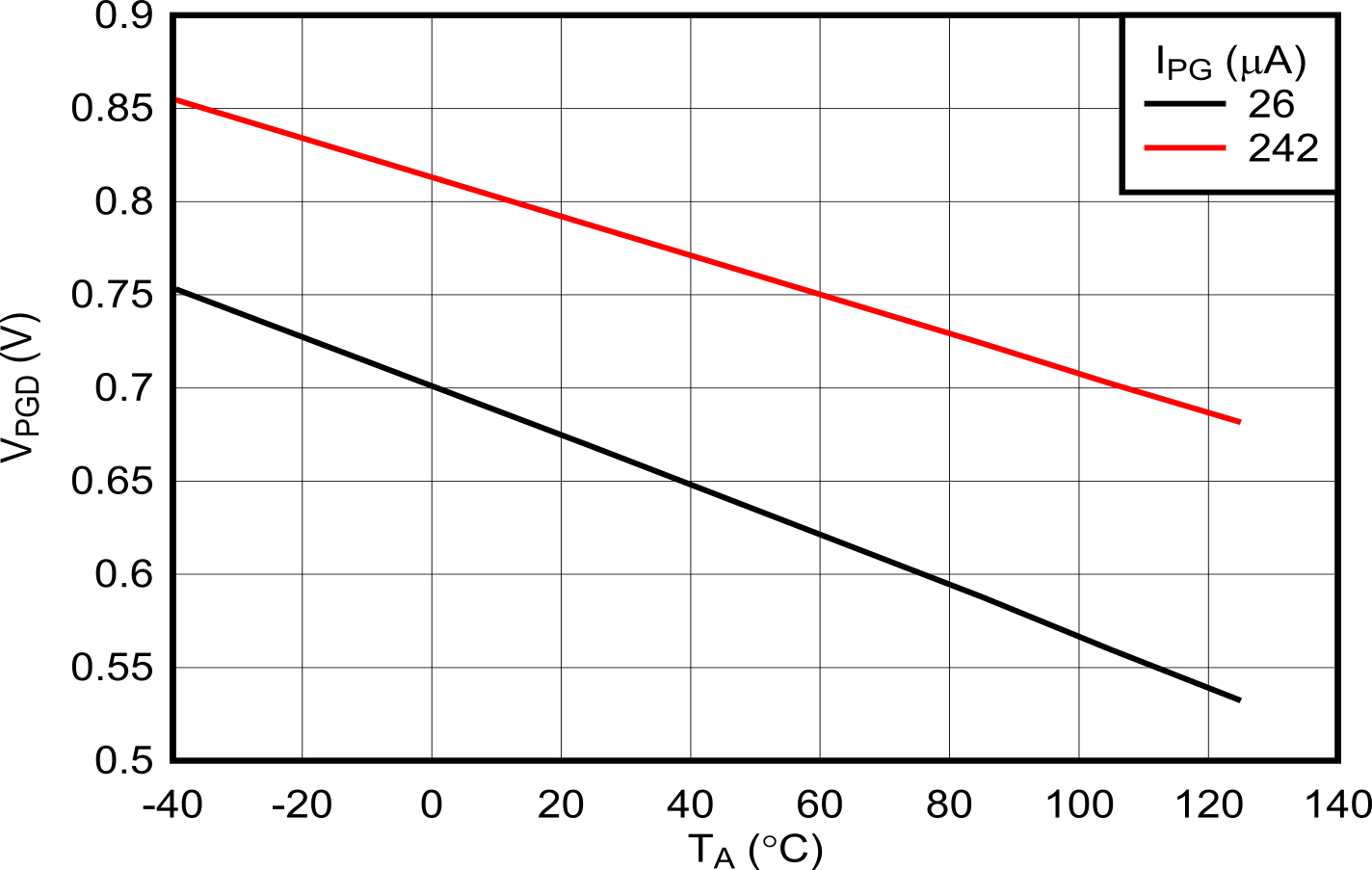 Figure 7-23 PG Low Voltage Without
Input Supply vs Temperature
Figure 7-23 PG Low Voltage Without
Input Supply vs TemperatureFigure 7-25 Time to Thermal Shut-Down
During Steady State
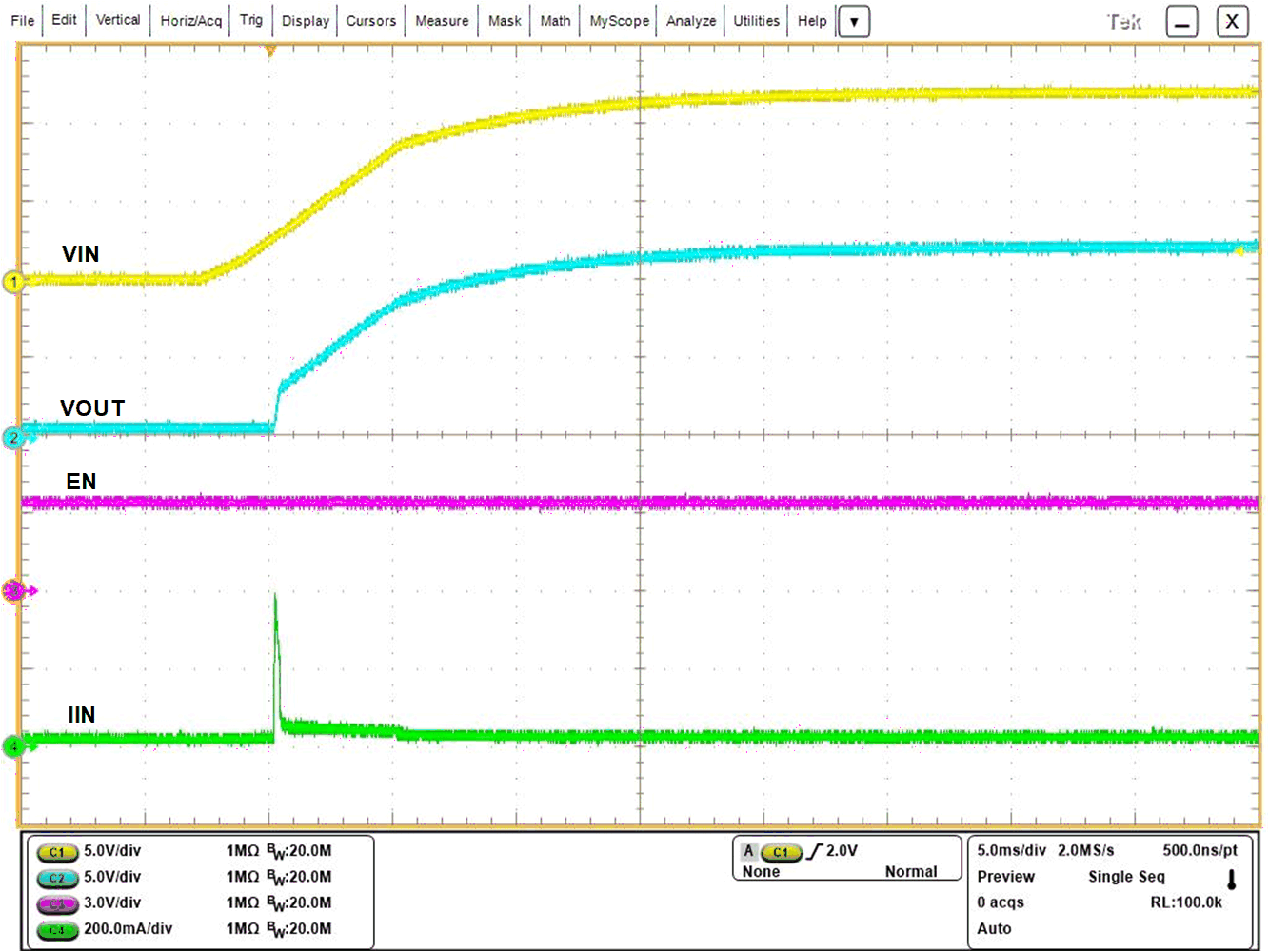
| VEN/UVLO = 3.3 V, COUT = 30 μF, CdVdt = Open, VIN ramped up to 12 V |
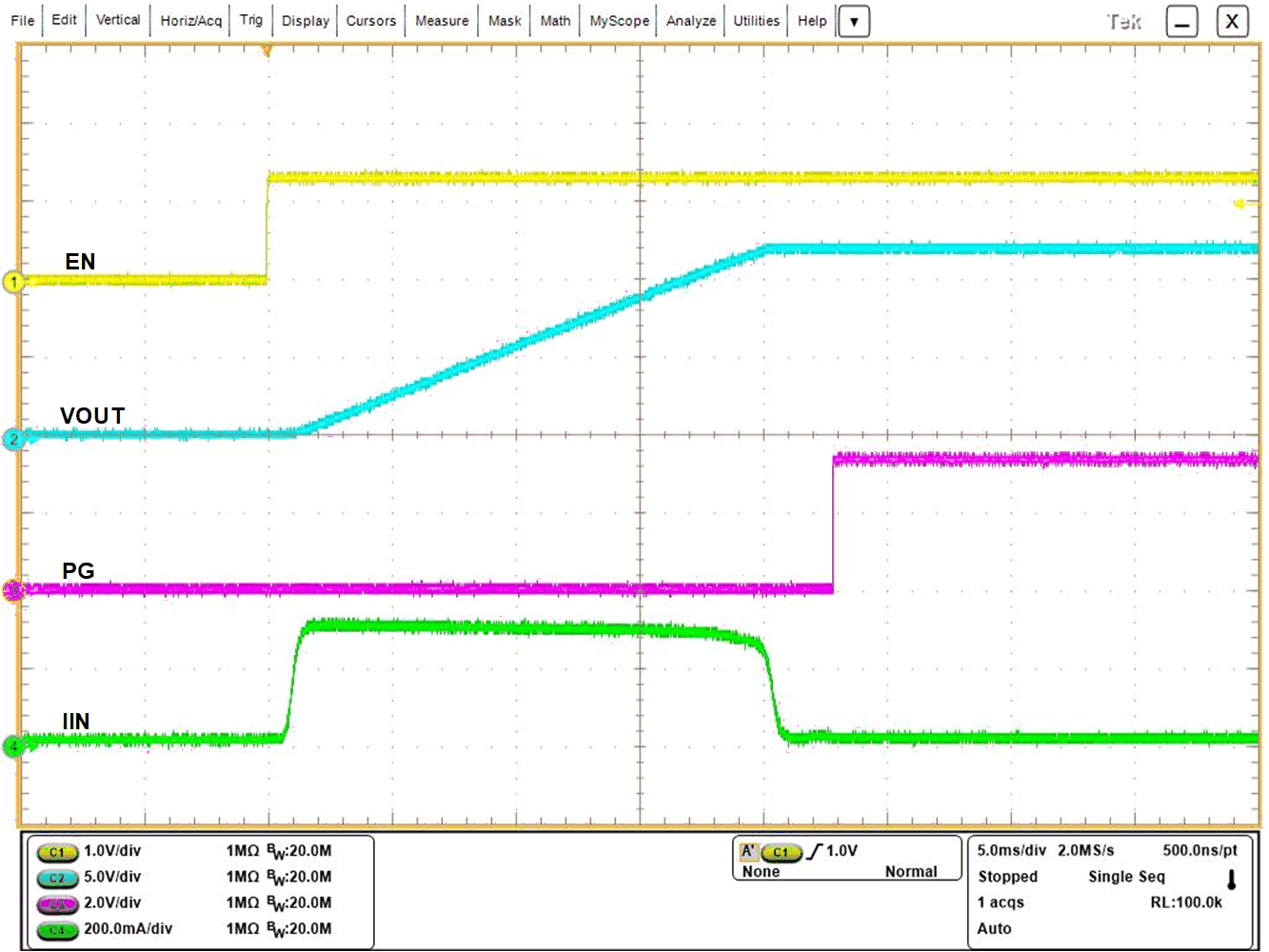
| VIN = 12 V, COUT = 470 μF, CdVdt = 3300 pF, VEN/UVLO stepped up to 1.4 V |
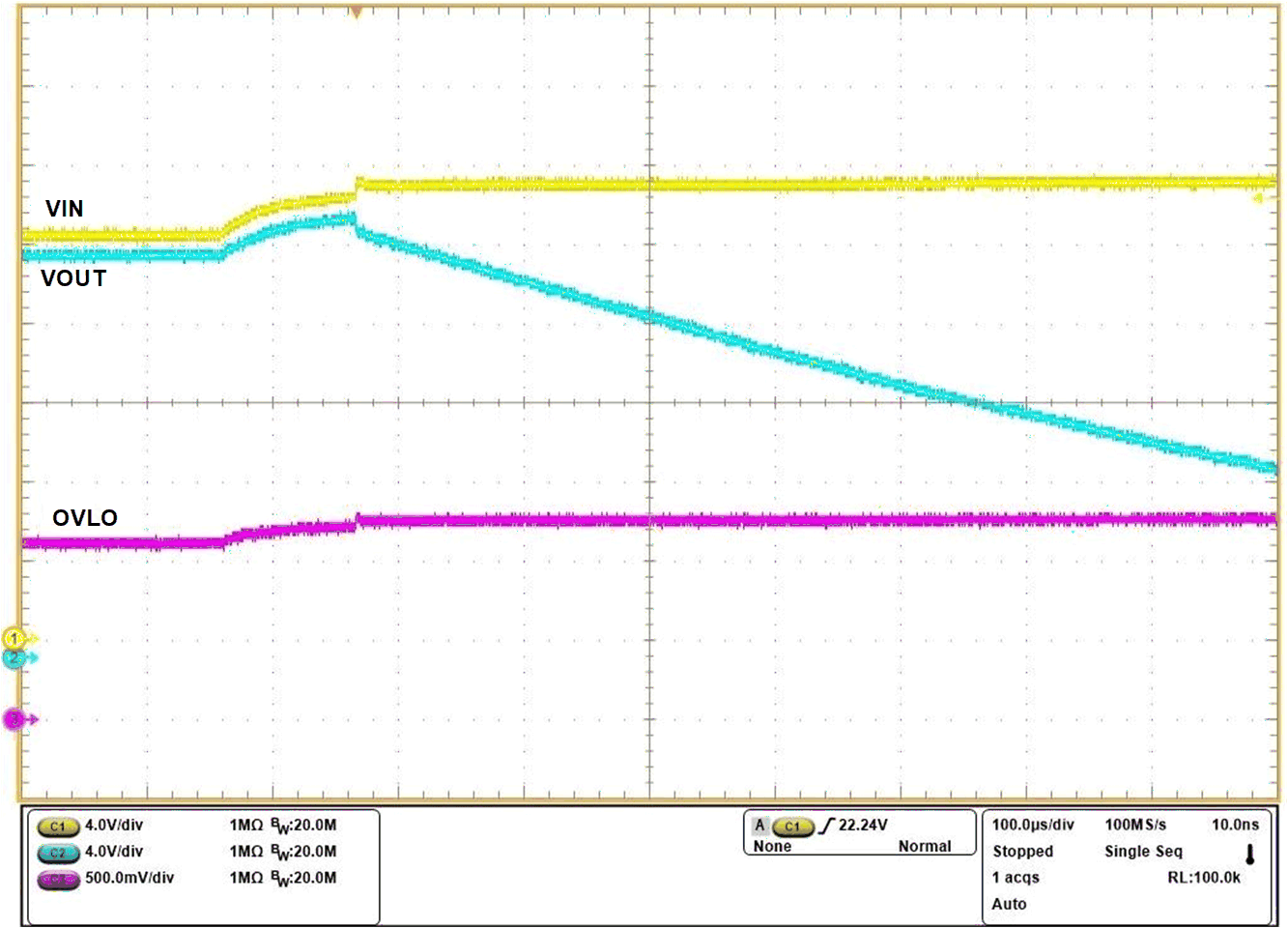
| COUT = 220 μF, IOUT = 4 A, VIN Overvoltage threshold set to 22 V, VIN ramped up from 20 V to 23 V |
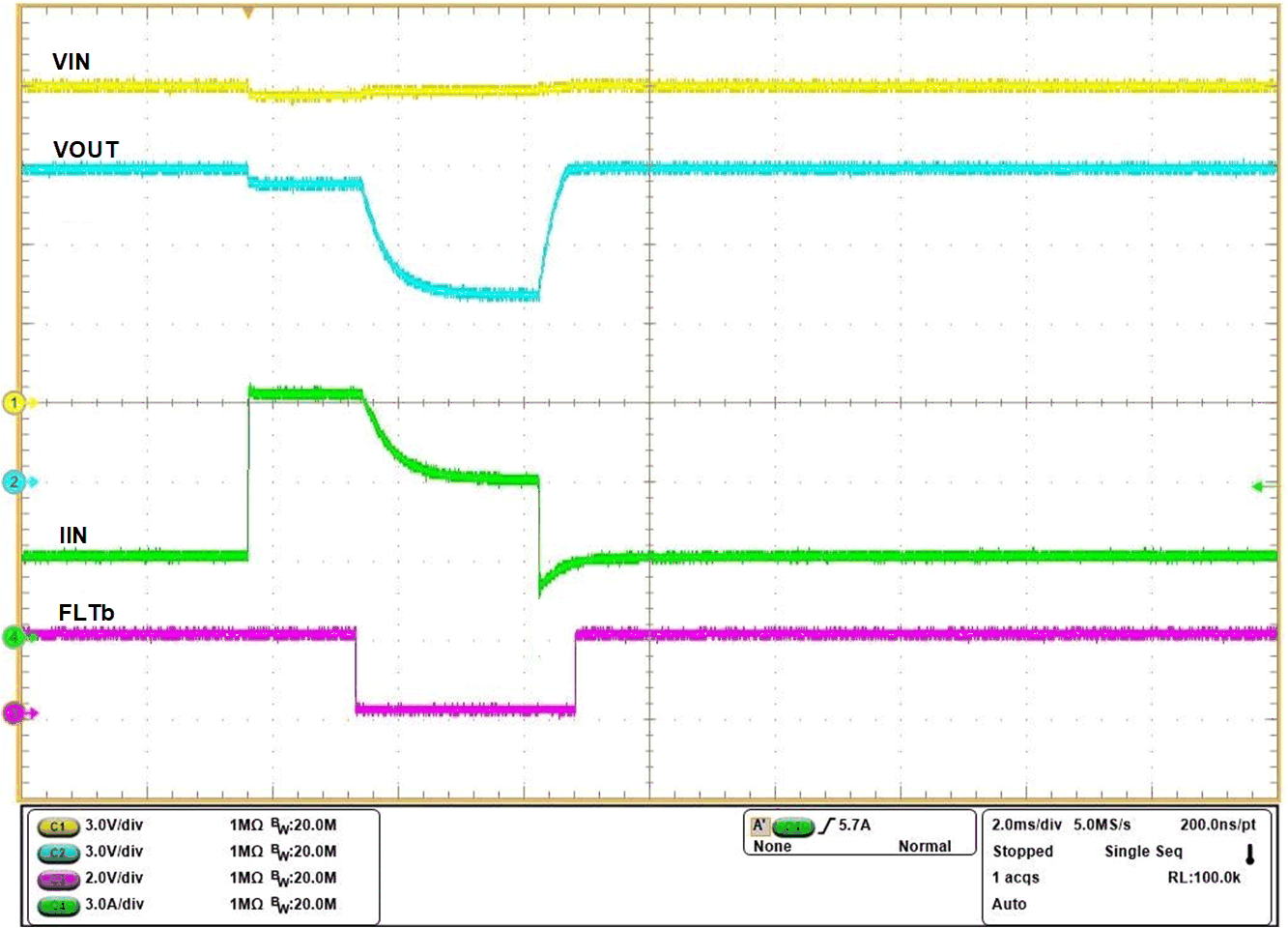
| VIN = 12 V, CITIMER = 2.2 nF, COUT = 220 μF, RILM = 549 Ω, IOUT stepped from 3 A → 9 A → 3 A within 5 ms |
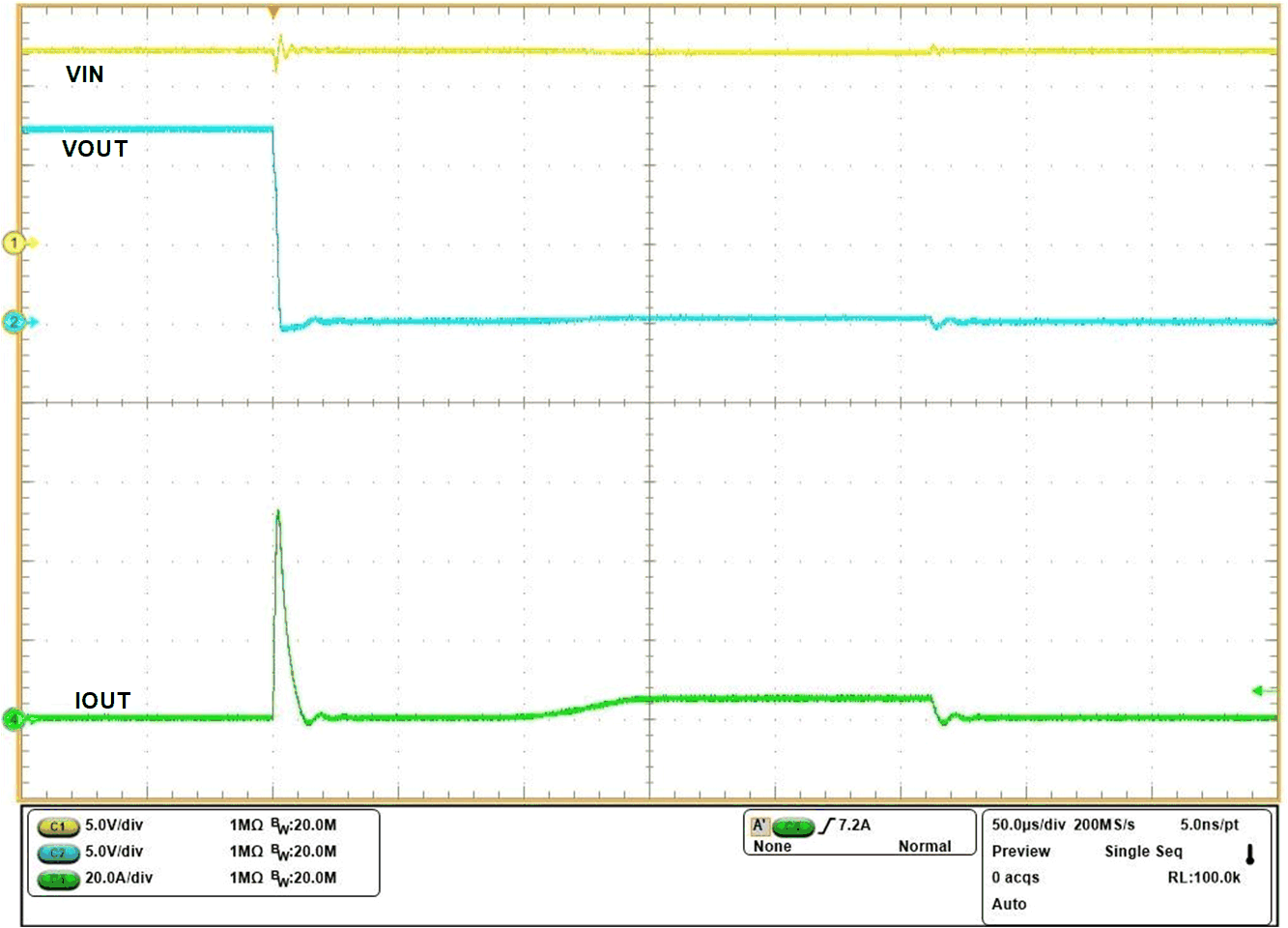
| VIN = 12 V, RILM = 549 Ω, VEN/UVLO = 3.3 V, OUT stepped from Open → Short-circuit to GND |
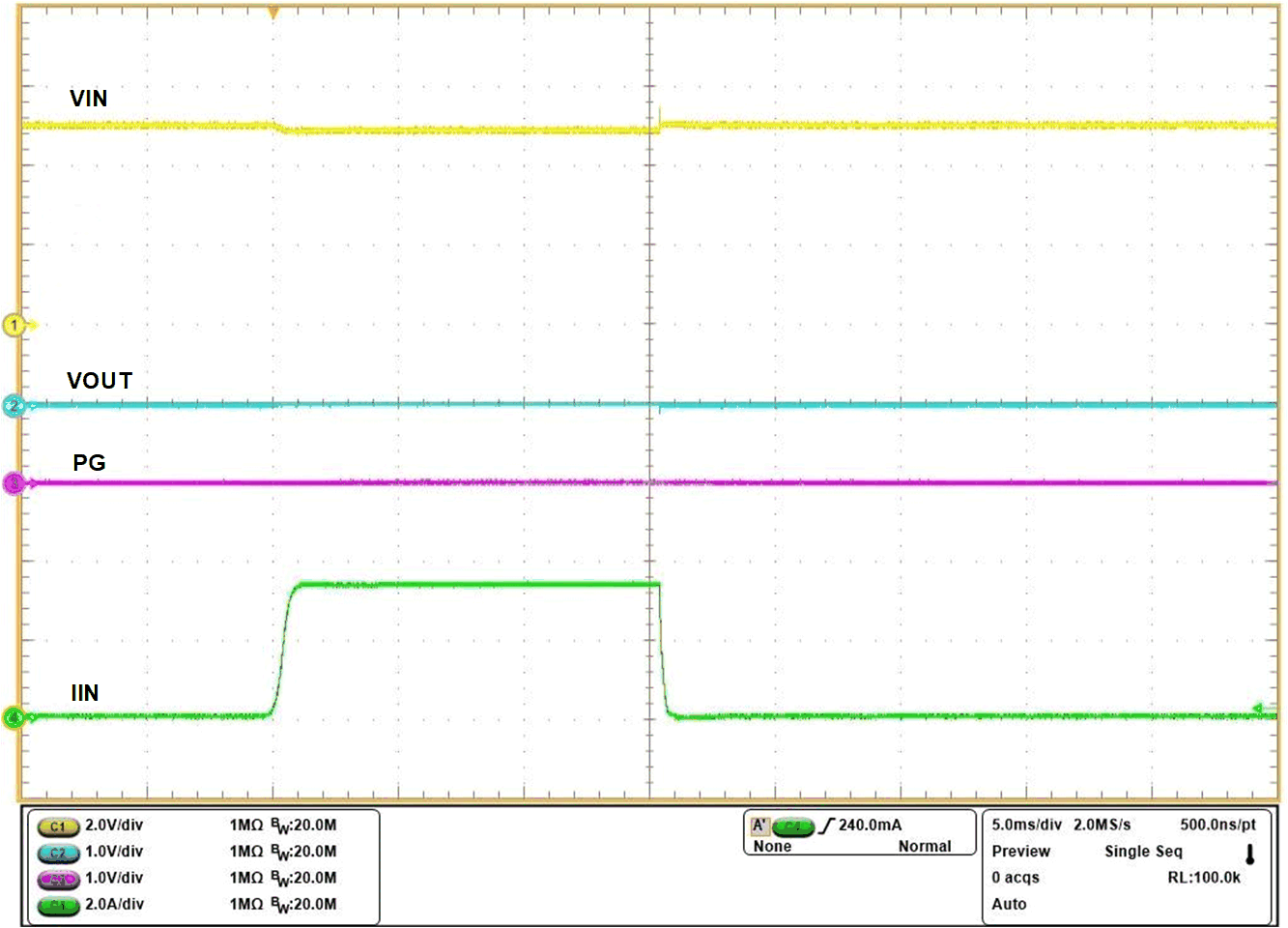
| VIN = 5 V, COUT = Open, OUT short-circuit to GND, RILM = 750 Ω, VEN/UVLO stepped from 0 V to 3.3 V |